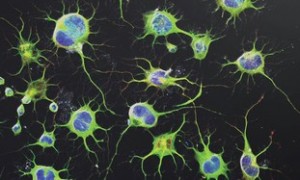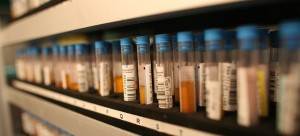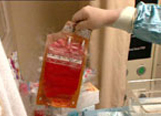
Joining a Bone Marrow Registry
A potential donor’s initial contact with Ezer Mizion’s Bone Marrow Registry begins with a cheek swab sample. This will enable the registry to make a preliminary determination regarding the compatibility between the donor and a patient in need of a bone marrow transplant. His genetic information will remain on the database for decades, available for any patient whose DNA matches his. Some potential donors are contacted for further testing within a year of registration, others not for 10-20 years or not at all.
Once it had been determined that a donor is a possible genetic match, things move quickly. When a patient is in need of a bone marrow transplant, time is of essence. Further testing must be done and it cannot wait. Should the patient’s condition deteriorate, the transplant, his last chance to survive, may no longer be medically feasible.
Often, if a great deal of time has elapsed since registration, the contact info is no longer valid. The internet is then surfed until the donor is located. No effort is too much when a human life is involved.
The donor is then asked if he would like to donate. The procedure is entirely voluntary and the donor has the right to refuse at the outset or at any time. No persuasion is used leaving the decision completely up to the potential donor.

In most cases, it is a stem cell transplant rather than a bone marrow transplant that takes place. This is a much simpler procedure which results in a higher percentage of potential donors agreeing to go ahead.
What do we mean by genetic match?
Human leukocyte antigens (HLA) are proteins that are present in most body cells. These antigens help identify tissue types. The immune system utilizes HLA antigens in order to identify the cells that belong in your body and the cells that do not belong in your body. If the immune system detects cells that do not belong on your body, it will reject them, thus resulting in a failed transplant.

HLA proteins are important in determining the compatibility of donors and patients for a stem cell transplant. In order to match tissue types for a transplant, the compatibility of ten of the donor and patient antigens are checked (generally, A, DR, C, B, and DQ).
Usually, a compatibility of at least 8 out of 10 antigens is necessary in order to approve a donor for a transplant.
In addition to the basic testing, Ezer Mizion’s Bone Marrow Registry is committed to supporting research to enhance results of transplants and the donor may be asked to participate in this research as part of the donation process. The decision whether to participate in the research is up to the donor.
Timing
Three weeks to several months may elapse until the patient’s attending doctor will come to a decision. The Registry staff will call the donor to inform him of the results of the compatibility confirmatory testing.
The donor may be asked to donate immediately or to wait until the patient is ready. Each case is different; the timing of the donation will be based upon what is best for the donor and for the patient. After a date has been set, the preparatory stage will continue.
At the preparatory stage before the donation, the donor will speak with the Registry staff in order to learn about the process and the risks and side effects involved in giving a donation. If he chooses to donate, he will undergo blood tests and a physical examination by a physician. A detailed questionnaire is also required in addition to a signed consent form.
Increasing Stem Cells in the Donor

On the day of the transplant, blood is taken from the donor, much the same as if he were donating blood. The stem cells are harvested from the whole blood and the remainder returned to the donor through the second arm. The process is repeated for several hours until the required amount of stem cells (depending on the size of the patient) is obtained. So that a large amount of stem cells be available, the donor receives neupogen injections several days before the transplant to stimulate the release of stem cells from the bone marrow into the blood stream.

The Transplant
When the required amount has been accumulated, the stem cells are then infused into the body of the patient through a central line, a painless procedure. Within 2 days to several weeks, the new cells will begin to produce red cells, white cells and platelets in place of the defective ones, thus producing a cure for many life-threatening diseases.
Bone Marrow Registry Anonymity
By international law, a registry must maintain confidentiality and strict non-disclosure of donor and patient information. This policy is for the protection of both the donor and the patient.
In order to maintain confidentiality of information, donors and patients receive an identification number. These ID numbers enable doctors to share important medical information without using names or addresses. This high level of privacy is maintained throughout the stages of the process.
Patients are informed only of the age and gender of their donor. Donors are told only of the age, gender, and disease of the recipient patient.


The patient’s identity may be revealed only after at least a year has elapsed from the date of donation and the patient has expressed his agreement to disclosure and a meeting. This meeting understandably will be highly emotional with the patient and his family trying to express the unexpressable: You saved my life!

